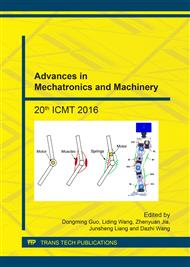[1]
L.B. Vogelesang, A. Vlot. Development of fibre metal laminates for advanced aerospace structures. J. Mater Process Technol. 103(2000)1-5.
DOI: 10.1016/s0924-0136(00)00411-8
Google Scholar
[2]
J. Sinke. Manufacturing of GLARE parts and structures. Appl Compos. Mater. 10(2003)293-305.
Google Scholar
[3]
M.S. HooFatt, C. Lin, D.M. Revilock, D.A. Hopkins. Ballistic impact of GLARETM laminates. Compos Struct. 61(2003)73-88.
Google Scholar
[4]
F. Pierron, B. Green, M.R. Wisnom, S.R. Hallet. Full-field assessment of the damage process of laminated composite open-hole tensile specimens. Part I: Methodology. Composites Part A. 38(2007)2307-2320.
DOI: 10.1016/j.compositesa.2007.01.010
Google Scholar
[5]
Lagattu F, Lafarie-Frenot MC, Lam TQ, Brillaud J. Experimental characterization of overstress accomodation in notched CFRP composite laminates. Compos Struct. 67(2005)347-357.
DOI: 10.1016/j.compstruct.2004.01.016
Google Scholar
[6]
M. Grédiac. The use of full-field measurement methods in composite material characterization: interest and limitations. Compos Part A. 35(2004)751-761.
DOI: 10.1016/j.compositesa.2004.01.019
Google Scholar
[7]
F. Laurin, J.S. Charrier, D. Lévêque, J.F. Maire, A. Mavel, P. Nuñez. Determination of the properties of composite materials thanks to digital image correlation measurements. Procedia IUTAM. 4(2012) 106-115.
DOI: 10.1016/j.piutam.2012.05.012
Google Scholar
[8]
G.H. Erçin P.P. Camanho, J. Xavier,G. Catalanotti,S. Mahdi,P. Linde. Size effects on the tensile and compressive failure of notched composite laminates. Composite Structures 96 (2013) 736-744.
DOI: 10.1016/j.compstruct.2012.10.004
Google Scholar
[9]
M.A. Caminero,M. Lopez-Pedrosa, C. Pinna, C. Soutis. Damage monitoring and analysis of composite laminates with an open hole and adhesively bonded repairs using digital image correlation. Composites: Part B 53 (2013) 76-91.
DOI: 10.1016/j.compositesb.2013.04.050
Google Scholar
[10]
Bataxi, Xi Chen, Zhefeng Yu, Hai Wang, Cees Bil. Strain Monitoring onDamaged Composite Laminates Using Digital Image Correlation. Procedia Engineering 99 ( 2015 ) 353-360.
DOI: 10.1016/j.proeng.2014.12.547
Google Scholar
[11]
C. Furtado,A. Arteiro, G. Catalanotti,J. Xavier P.P. Camanho. Selective ply-level hybridisation for improved notched response of composite laminates. Composite Structures 145 (2016) 1-14.
DOI: 10.1016/j.compstruct.2016.02.050
Google Scholar
[12]
ARAMIS Commercial Software v6. 1, GOM mbH. August 7, (2009).
Google Scholar
[13]
G. Catalanotti, J. Xavier, P.P. Camanho. Measurement of the compressive crack resistance curve of composites using the size effect law. Compos. Part A: Appl S. 56(2014)300-307.
DOI: 10.1016/j.compositesa.2013.10.017
Google Scholar
[14]
H. Haddadi, S. Belhabib. Use of rigid-body motion for the investigation and estimation of the measurement errors related to digital image correlation technique. Opt. Laser Eng. 46(2008)185-196.
DOI: 10.1016/j.optlaseng.2007.05.008
Google Scholar


